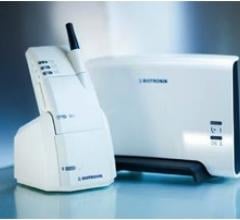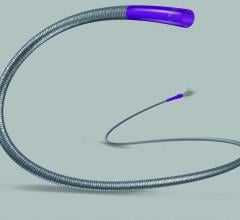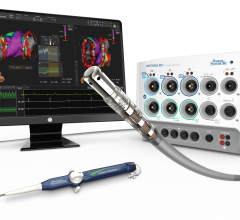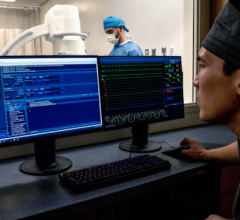An Effectiveness and Cost of ICD Follow-Up Schedule with Telecardiology (ECOST) study indicated the Biotronik Home Monitoring may reduce follow-up costs in patients with implantable defibrillators (ICDs).
The Society for Healthcare Epidemiology of America (SHEA), an infection control organization, issued voluntary recommendations regarding physician attire in Infection Control and Hospital Epidemiology. White coats, neckties, and wrist watches can become contaminated and may potentially serve as vehicles to carry germs from one patient to another.
CorMatrix Cardiovascular Inc. received a patent for an augmented injectable extracellular matrix (ECM) bioscaffold.
Providing exceptional cardiovascular care for patients to achieve the best possible outcomes is the number one goal for ...
The ViScope MD by HD Medical Inc. features murmur detection capability and offers an integrated visual display to allow medical professionals to perform dynamic auscultation and “see” the heart sounds they hear in real-time visual waveforms.
Boston Scientific has received U.S. Food and Drug Administration (FDA) clearance and CE mark approval for its Direxion Torqueable Microcatheter.
Cour Pharmaceutical Development Co. Inc. published data in Science Translational Medicine showing the potential of Immune Modifying Nanoparticles (IMP) to reduce inflammation and promote tissue repair and regeneration in patients who have suffered a heart attack.
Cardiac positron emission tomography (PET) is growing in popularity among cardiologists because it provides the ability ...
The U.S. Food and Drug Administration (FDA) cleared Radius Medical LLC’s Prodigy Support Catheter. Engineered to provide back-up support to guidewires, the Prodigy Support Catheter is intended for use in treating chronic total occlusions.
Patients in the European Union (EU) received the first Veniti Vici Venous Stent System implants to treat symptomatic venous outflow obstruction of the lower extremities.
Men with enlarged prostates can find relief with a non-surgical treatment that shrinks the gland, suggests research done on more than 100 patients and presented at the 26th annual International Symposium on Endovascular Therapy (ISET).
When performing radiofrequency (RF) ablation to treat cardiac arrhythmia, medical professionals must balance the safety ...
Six-month results of the ESPRIT trial suggest a bioresorbable drug-eluting scaffold is effective in opening blocked blood vessels in the legs and pelvis, as presented at the 26th annual International Symposium on Endovascular Therapy (ISET).
Peripheral artery disease (PAD) sufferers maintain improved quality of life, including being able to walk farther, three years after being treated with stents to open their blocked leg arteries, according to STROLL trial results presented at the 26th annual International Symposium on Endovascular Therapy (ISET).

The U.S. Food and Drug Administration (FDA) has approved many cardiac implantable electronic device models currently in use through a review process in which models were deemed safe and effective based on approval of prior versions of the device, according to a study published in JAMA.
Change Healthcare Cardiology Hemodynamics is an integrated hemodynamic monitoring system for monitoring vital signs and ...
Argon Medical Devices Inc. received clearance from the U.S. Food and Drug Administration (FDA) to begin marketing the OptionElite retrievable inferior vena cava (IVC) filter with an over-the-wire delivery technique.

An international research team, led by Icahn School of Medicine at Mount Sinai investigators, designed and tested a high-density lipoprotein (HDL) nanoparticle loaded with a statin drug. In mouse studies, they show HDL nanotherapy is capable of directly targeting and lowering dangerous inflammation in blood vessels.
An international research team at Icahn School of Medicine at Mount Sinai is testing a sugar-based tracer contrast agent to be used with positron emission tomography (PET) imaging to help identify dangerous inflammation and high-risk vulnerable atherosclerotic plaque inside vessel walls that causes acute heart attacks and strokes.


 January 27, 2014
January 27, 2014












